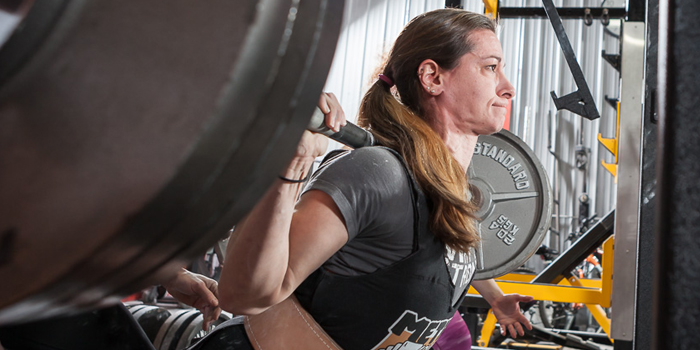
Fourteen years of powerlifting brings a slew of experience to the table, from training and nutrition to program cycles and maybe even injuries. It will also give you a solid foundation of thick muscle. Yes, even if you’re looking for a svelte athletic look, heavy training should be your foundation. And not just the big three lifts but your accessory work as well — barbell rows, stiff legged deadlifts, overhead presses, extensions, you name it. Hit it heavy and hit it hard.
And that’s what I did for years. I just moved the weight. Years and years later, I’ve come to a few conclusions.
Just Move Weight
There is a time and a place to throw weight around, to heave heavy barbells into some type of exercise that resembles a row. Continuing to move heavier weight gets you stronger and does build some mass, but what happens when you’ve worked up on heavy barbell rows and you still don’t have the back development that you want? Or it isn't transferring over to the strength of your big lifts?
At some point, you'll need to make technical corrections on your big lifts. Why is your squat stuck? Why has your bench stalled? (In fact, with over 150 PRs hit at the last Powerlifting Experience 2 at the elitefts™ compound, it’s safe to say that the attendees didn’t get stronger while there; they got technically better.) But what if certain firing patterns are off? What if your back and lats aren’t engaged properly on the bench even though you can throw up a heavy ass barbell row? Are your back and lats really getting worked the way they need to be?
Bodybuilders, on the other hand, have long been known to slow things down a bit and focus on the contraction. You know, that mind-muscle connection. Well, maybe there’s something to that. What if I lighten the load on my barbell rows a bit and focus on the motor pattern and firing patterns of the back? Get my rhomboids and lats to work rather than having traps and other compensations take place. What if I really squeeze every muscle fiber? Can I grow that way even though I’m not slinging around heavier weights?
As I transitioned into physique training for my shows, I noticed a huge difference in certain muscle groups with not only their strength but also their development.
- Strength: Despite having a decent squat, bench and deadlift, I knew that there were a few things off with my lifts. Part of it had to do with the use of suits and shirts, but despite having a decently developed back, my lats weren’t engaging completely to get the most out of my lifts. Despite having decent glute development, I was still compensating with my low back a lot. I was missing out on some big things due to the fact that I was either compensating or not having the proper firing pattern.
- Development: Years of training accessories like a powerlifter left some muscle groups lagging behind. While some of it could be blamed on overall lack of volume, it can also be blamed on, again, compensatory patterns and “just moving weight.” Shoulders and quads were left lacking, so we paid careful attention to their development (contractions, holds, slowing down movements) during prep season – and now off-season even more so.
- Technical: The first two points funnel into this one as well. As I mentioned with strength, poor reps can lead to a slew of compensation patterns. Not only does it cause compensations with the accessories you perform poorly, but it also causes compensations in your big lifts as well. For example, I used to have a hitch in my bench press. One lat was poorly engaged, causing the shoulder to hike during the press, and I would miss my groove with it. I could bench all day long, but if I kept making the same mistakes without fixing the problem, nothing would get better. After figuring out some of the issues, I really started to notice the poor firing patterns in my lat work – rows, pull-downs and pull-ups of all variations. I’ve taken the last few months to hammer out those motor patterns and it’s paying off in my bench press.
RELATED 12-Week Conjugate Program for Raw Powerlifting
Now that some of these connections are made, my coaches and I can move forward with a training plan (for both strength and aesthetics). What does that plan look like? And more importantly, if my reasons weren’t enough, why would you want to do “so many stupid reps”? I asked a couple colleagues to chime in on this subject matter as well. The points below may help you reevaluate some of your training.
Alexander Cortes
So many reps…also known as training like a bodybuilder! Powerlifting is a simple sport and a straightforward passion for the people who compete in it. You train for a one-rep maximum on the squat, bench and deadlift. Your training is always strength-minded: “Will this help my {insertlifthere} go up?”
When it comes to building muscle, this is always considered within context of the power lifts:
- “I need stronger glutes for my lockout.”
- “I need more triceps and pecs for my bench.”
- “My quads are weak. I need to do safety bar squats.”
The powerlifting mentality is beautifully simple, but this also creates a common and recurrent issue that gets in the way of actually building more muscle. What’s the issue? Every lift and exercise that’s performed is done in the context of how heavy one can go. Or anything that can’t be done heavy gets done sloppily and thrown away because heavy is the only thing that counts in a powerlifter's head.
For the big three, this makes sense. The sport is predicated on a max effort after all. For building muscle though, obsessing over constant linear progression and how much weight you can use doesn’t help much. Why’s that? Because “heavy” isn’t necessary or required to actually build muscle.
Muscle growth comes from a combination of the following factors, listed in order of importance:
1. Eccentric damage to the muscle: This is something that’s generally achievable only with high reps or slow and controlled reps. What’s eccentric damage? It’s the muscle fiber literally getting torn up during the negative (eccentric) portion of a rep. The thing with eccentric damage though is that it doesn’t happen from only one or two or three or four or five reps. It’s only with prolonged load and tension that a muscle will start to break down. This mandates a lot of reps, like around 25 to 50 or even over 100 total reps (over multiple sets) for bigger muscles like quads.
2. Metabolic damage: This is the burning feeling you get from getting a pump, the pump that comes from doing high reps, controlled reps, drop sets, extended sets, iso-holds, static holds, iso-pulses, forced reps and all the other stuff that bodybuilders do. What do all these things do?
While doing reps is causing eccentric stress, you're always quite literally pumping blood in and out of a muscle as you repeatedly contract it. Your muscles start creating waste products from these repeated contractions. These waste products are called metabolites. They are part of what creates the burning sensation, and they are also proven to be partly responsible for signaling a muscle to recover and grow. Again, one to five reps just doesn’t cut it for creating this intramuscular state. You need more reps to do this.
3. Time under tension: This follows the above. Muscle tissue grows bigger when it's stressed for long periods of time. Three to five reps doesn't make for good time under tension. Again, there is a reason why bodybuilders train in the eight- to 20-rep range for almost all of their movements. Prolonged time under tension causes the eccentric damage, metabolite buildup and mechano growth factor and also signals growth hormone release. Stuff like lactate (commonly misidentified as lactic acid) also causes more anabolic signaling that stimulates a muscle to grow. Again, this is all because of the reps being done. I’m being overly repetitive, but there is no getting around this.
4. Progressive loading: This is where the weights used actually come in. Assuming the above factors are happening, you still want the resistance that you use to increase over time. Relative to the big lifts though, the increase will be much slower and far more incremental.
So what do all these things mean? Basically, a muscle doesn’t grow much if it isn't damaged enough, and low reps don't damage a muscle enough to get truly significant growth. (There will always be outliers, but exceptions don't make for good suggestions.) Therefore, if your interest is in building more muscle, you need more reps. And for the sake of injury prevention, getting a pump and creating eccentric damage, those reps need to be quality reps.
Your assistance work is the cruise mode of a souped-up car, not the nitrous oxide burst. You have to approach it with a more relaxed (but no less focused) mentality. Bodybuilders get made fun of a lot for all the reps they do. How do you get excited for push-downs after all? But their training mentality for what they do is perfect. They are focused on the muscle being worked, not on what the plates or the weight stack says. And wouldn’t you know it, most serious bodybuilders are pretty damn strong when they want to go heavier. Mass moves mass after all.
Scott Paltos
The world as we know it is ending. Bodybuilders aren't symmetrical; athletes are six feet, six inches and running 4.4s consistently; women’s physique shows are now women’s bodybuilding shows (stupid) and powerlifters are lean. For real, this is a change of times. For the outsider or fan, it's really awesome to see. OK, well maybe not the bodybuilding stuff because it has lost its aesthetic appeal for a more huge effect. Don’t get me wrong—the physiques you see are pretty damn impressive, but I'm a traditionalist with that stuff. The real impressive stuff is the athlete’s progression as well as actually having a lot more lean powerlifters. A good reason for those two things is the attention to detail in training and nutrition. For this piece, we will hone in on the training aspects. (Maybe I can talk Julia into doing a second part involving nutrition.)
For years, slingin’ weights and not emphasizing form or even control have cost a great deal of trainees time on the field or under the bar. For the past decade or so, that has all changed dramatically. These power athletes have certainly gone back to some of their training roots by adding in some more bodybuiling-esque routines. This doesn’t mean that we have powerlifters curling in the mirror all the time or some big time slugger hitting leg extensions for timed sets. Wait, it does mean this.
Below are some of the reasons why I've seen this transition. I'm also aware of it all because regardless of sport or competition, all my athletes have utilized some of these principles with a great deal of success.
1. Staying healthy: We know that a muscle can only grow, and connective tissue can only get stronger if it's put under tension. So by adding in some set/rep schemes that may put a little more effect on specific muscle groups, it can soon support more stress. A joint can only hold so much stress without support. Now, if we created a stronger environment around it (muscle/tissue/ligaments/tendons) that joint will be that much safer. It doesn't guarantee anything, but it at least allows for a positive outcome and purpose. For example, a powerlifter adding in some curls to help strengthen the bicep secondarily is important. You will get a ton of powerlifters who say that’s stupid, and you may even see some scars around their elbows, armpits or shoulders. Get my point? Again, nothing guarantees health, but at least plan on trying to stay healthy.
2. Aesthetics: I know, I know. “All I care about is performance.” Sorry, maybe Julia, Alex and I are just way too vain to believe this ourselves. Performance is number one by far… by far...but do you see any NFL linemen as spokesmen for anything like Weight Watchers or SlimFast? Nope. How about big fat powerlifters with great totals? A lot of cover shoots or money-making gigs on the outside? I hate to say it, but by involving some more aesthetic centric bodybuilding routine to your training program, you can allow for a more effective body composition. Typically, the more aesthetic look will attract sponsors, endorsements and certainly some other money ventures. There are exceptions for sure, but the normal nowadays is to be relevant to the population, not just the group. Sorry, I know that’s vain.
3. Crossover: This is a huge one. You see it all the time now. Strongman moves over into CrossFit. CrossFit moves into powerlifting. Powerlifting moves into bodybuilding. The cool part, off topic, is it shows that a well-rounded program with dynamic movement, strength-focused movements, and bodybuilding muscle builders all work together. Kind of not off topic there but true. Adding in some bodybuilding work allows the muscle to take more stress and then create more power. So when we mix that into a well-rounded program, we can do multiple things.
We always need a well-versed coach to help create some crossover and we need proficiency in movements to be good, but having a mix of all of it can really help create multiple domains. Look at the three of us—Julia from one of the best powerlifters to having success on the physique stage, Alex traveling the world as an incredible ballet artist to starting a powerlifting career, and then little old me, a short NFL career to Strongman to CrossFitter to powerlifter. Well rounded creates a good environment.
4. Because it’s fun to add volume: I routinely ask this at all my seminars and lectures: Why do you train? The answers include "I want to be strong," "I want to bench XXX pounds," "I want to look good," and "I want to be fast." How about you enjoy it folks, right? Who really wants to do something that they don’t like doing? Yeah, I get it. We need to address weak points and train things that we aren't good at, but we still love being in the gym, garage or basement moving weights. Adding in a little bodybuilding routine doesn't overtax the nervous system and can help us spend more time in the gym with an intelligent motive. We can only hit submaximal weights a few times a month. Fuck, sometimes not even a month for veterans. But we can crush some dumbbell work, band work and isolation movements while gaining some muscle and strength. Heck, the more muscle we have, the more capability we have at moving more weight. There's a simple reason right there. Plus, we can “gym rat” the hell out of the training by adding in some bodybuilding routine to our program.
5. For the nerds: Feeling a muscle work is very important. Creating time under tension, like mentioned earlier, is an incredible way to get a true pathway created between the mind and the muscle. Yes, we're delving into the significance of the nervous system and creating those proper pathways and recruitment for muscle memory. We know that each repetition we do creates that memory and correct pathway. By throwing weights around sloppily, we significantly hinder the right path, creating an unhealthy movement. Now, while focusing on each rep and set with some intention to create a larger muscle connection, we get to our “gainz” more efficiently. The mind is a terrible thing to waste. If we can't connect properly, we won't stimulate what we need to. I'm all for a balance in tempo and movement speed, but more importantly, we need to control that mind-muscle awareness. I won't hammer you with slow eccentric timing and concentric timing, but I will say that there is a time and place for all that. There is a significance to training tempo in anything we do, but before I out nerd myself, I'll end it there.
I have more thoughts, but these five should suffice for now. Perhaps we can convince Julia to do a part two, three or four. Even though I'm not a fan of what bodybuilding/physique sports have become, I still have a great deal of respect for how a number of them train to get what they have. As a crossover/multiple sport athlete myself, I see a tremendous amount of benefit personally in adding the right swole work. As a coach who trains all levels of people and athletes, I see the benefit for each and every one of them by adding in some “smart” to their training.
As you look at these points and your own training, be honest with yourself. Where can you stand to change some things? What can you do better? And are you willing to take (what may seem like) two steps back to go five steps forward? Feel free to comment and ask questions.









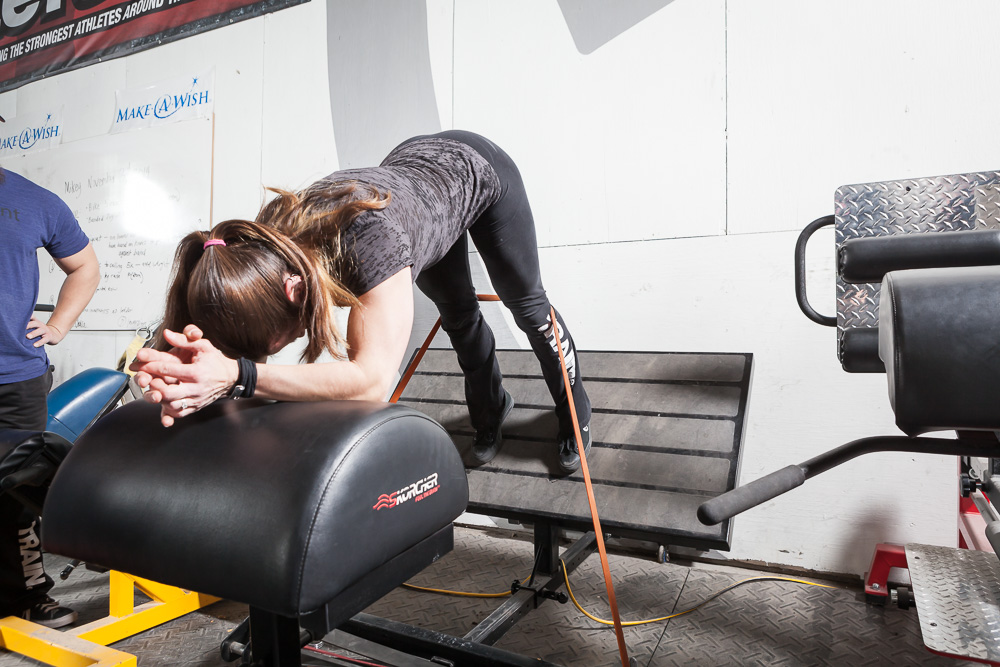
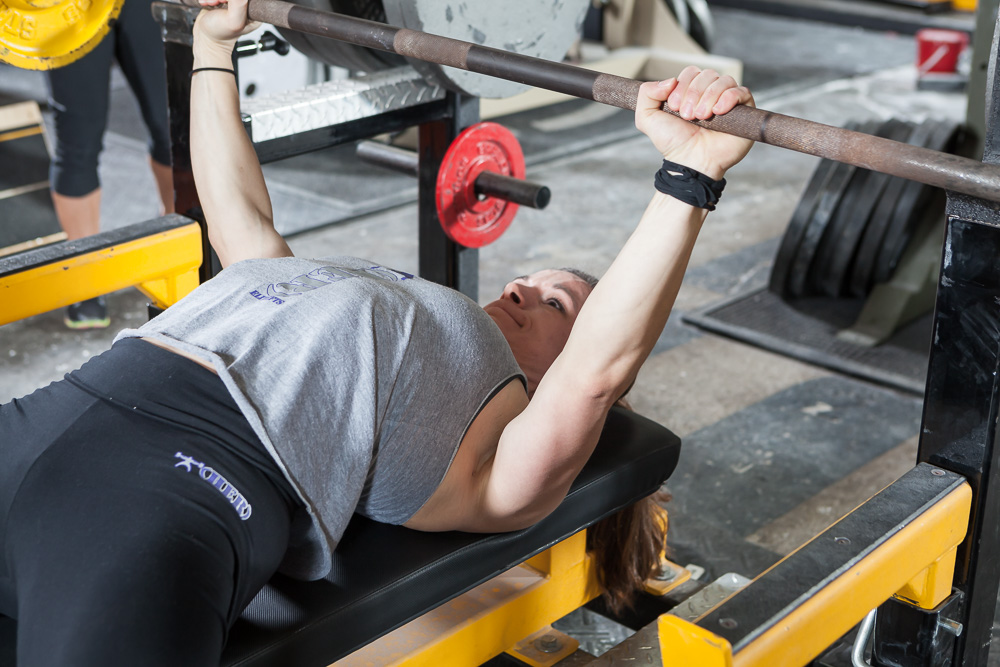
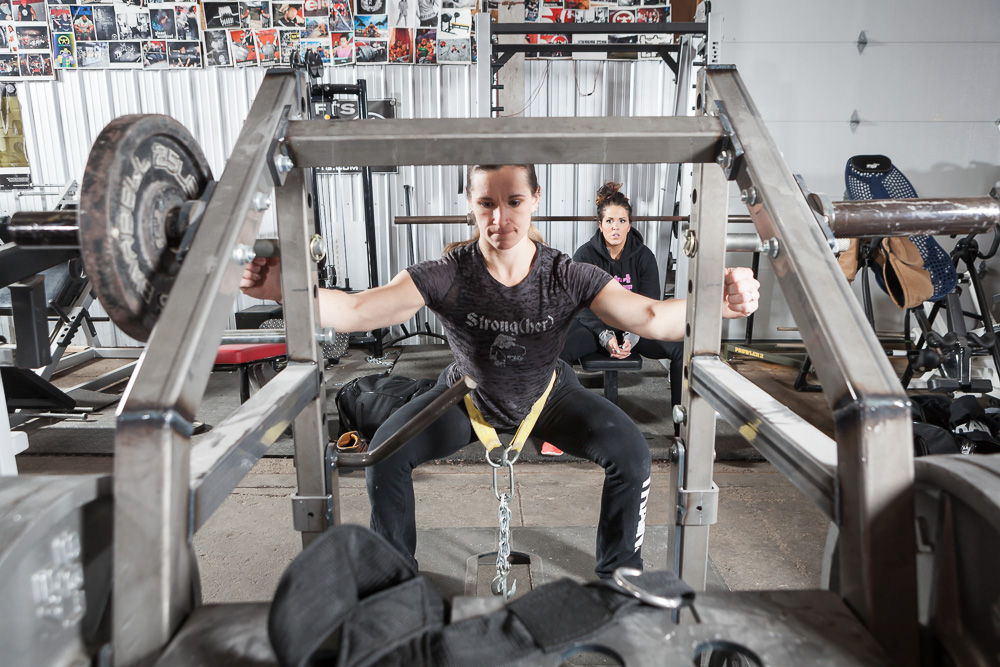
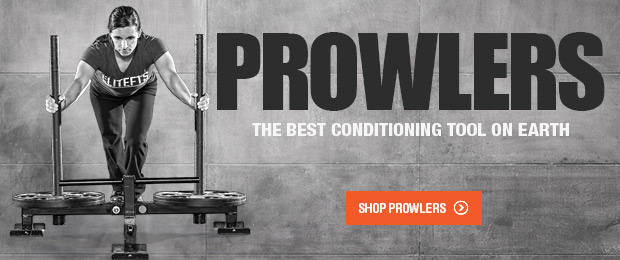
Which program do you think is better when creating that eccentric damage and muscle restoration, would the full body push and pull days work out better than the lower, upper body days? I am guessing that the singular upper and lower body days would provide more volume specifically, but I was curious on what you thought?
http://jap.physiology.org/content/107/4/1156.short#sec-21
Great question!! I am going to assume you are talking about muscular growth here, since that's mostly what we talked about in the article. Yes, muscles get damaged on the eccentric for sure, but that's not the ONLY thing that will cause a muscle to grow. So when talking about what split/program would work better, I think we need to look at a few factors:
1. Goal of the program (specifically). Add mass? Which body parts? More strength focused? Etc, etc.
2. How many days a week are you training? If you can only train 3 days a week, then a more strategic split of making sure to hit the necessary muscle groups twice would be important.
3. How good is your recovery? Recovery comes from sleep, nutrition, soft tissue work, less stress, etc. etc.
In short (this really could be an entire article), I think the push/pull split is tough to get all the volume in that is needed FOR EACH BODY PART. Lower/upper days tend to work a little better (again, if mass is your goal)... but you'd most likely have to split it further than that as well. Meaning, one day is lower, one day is back, one day is chest/shoulders....etc.
Take a peak at my log for the last 2-3 months. You'll see how I split up my days and how I add in a little extra volume on certain body parts (like right now back day has a few bicep exercises as well)